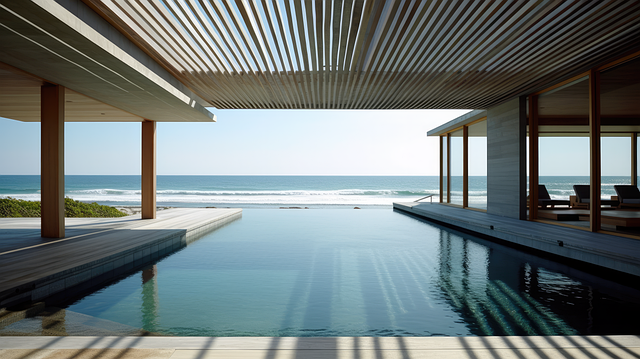A beautifully plastered pool not only enhances the aesthetics of your outdoor space but also plays a crucial role in maintaining water quality and structural integrity. In this comprehensive guide, we’ll delve into the world of pool plaster, exploring everything from the types of plaster to the steps involved in achieving that perfect, long-lasting finish.
Table of Contents
Understanding Pool Plaster
-
- Pool plaster is the final layer applied to the concrete or gunite shell of a swimming pool.
- It serves both decorative and functional purposes, providing a smooth and water-tight surface.
Types of Pool Plaster
-
- White Marcite: A classic choice, cost-effective, and gives the pool a traditional light-blue hue.
- Colored Plaster: Available in various shades, offering a customizable and vibrant finish.
- Exposed Aggregate: Combines plaster with pebbles or glass beads for a textured, visually appealing surface.
- Polished Aggregate: Smooth to the touch, achieved by grinding and polishing exposed aggregate.
The Plastering Process
-
- Preparation: Surface preparation is critical. Repair any cracks or imperfections in the pool shell.
- Bond Coat Application: A bonding agent ensures proper adhesion between the existing surface and the plaster.
- Mixing and Application: Plaster is mixed with water and applied evenly across the pool surface.
- Troweling and Finishing: Skilled workers use trowels to create a smooth and uniform finish.
Ideal Timing for Pool Plastering
-
- Plan pool plastering during dry weather to avoid rain-related complications.
- Consider factors like temperature and humidity for optimal curing.
Curing and Start-up
-
- Allow the plaster to cure for an appropriate period before filling the pool.
- Follow a precise start-up procedure, including water balance and chemical treatments.
Maintenance Tips for Pool Plaster
-
- Brushing: Regularly brush the pool surface to prevent algae and mineral buildup.
- Chemical Balance: Keep pH, alkalinity, and calcium hardness levels within recommended ranges.
- Avoid Abrasive Cleaners: Use gentle cleaning tools to prevent damage to the plaster finish.
Recognizing Common Issues
-
- Staining: Identify and address the cause of stains promptly.
- Cracking: Monitor for cracks and address any structural concerns immediately.
How to Repair Swimming Pool Plaster
Replastering
-
- Depending on the type of plaster and maintenance, replastering is typically required every 7 to 15 years.
- Consider replastering as an opportunity to update the look and feel of your pool.
Consulting with Professionals
-
- Engage with experienced pool plastering professionals for initial installation or renovation projects.
- Seek expert advice on the most suitable type for your specific pool and preferences.
Conclusion
Investing in quality pool plaster is an investment in the long-term beauty and functionality of your swimming pool. From choosing the right type of plaster to meticulous application and ongoing maintenance, this guide provides the essential insights to achieve a stunning and durable finish. With the right knowledge and care, your pool can be a captivating oasis for years to come.

